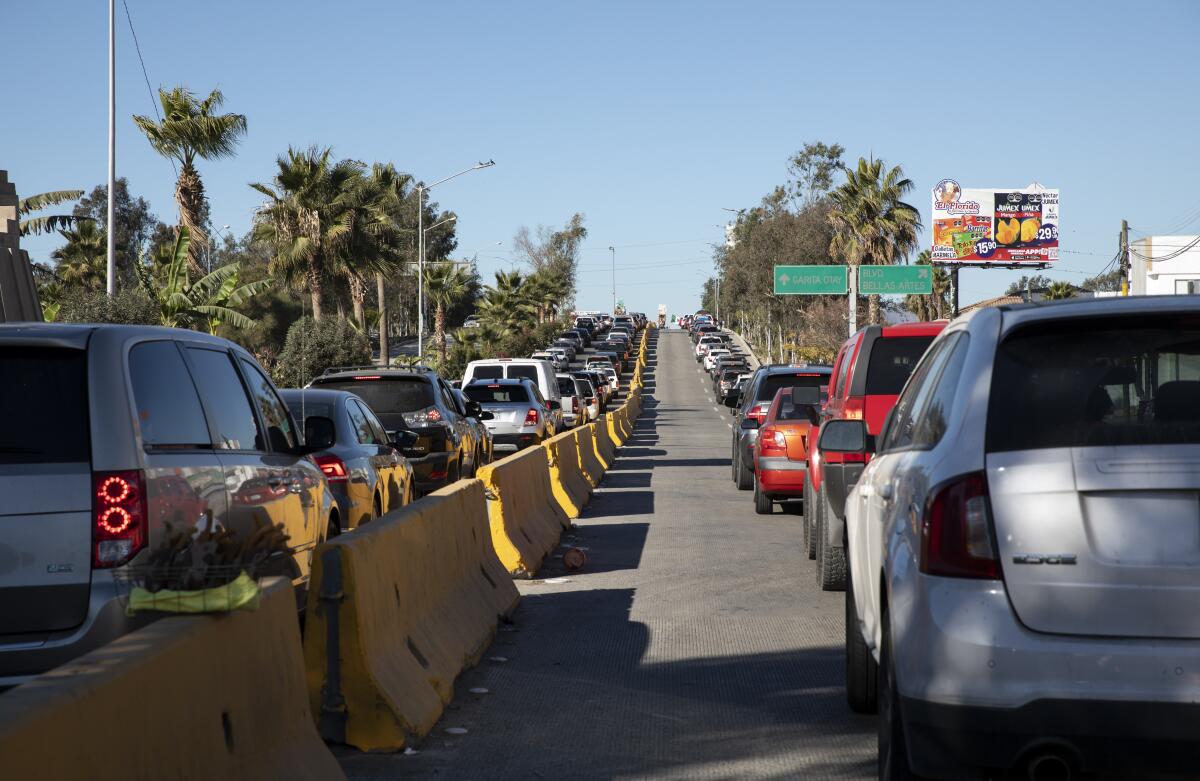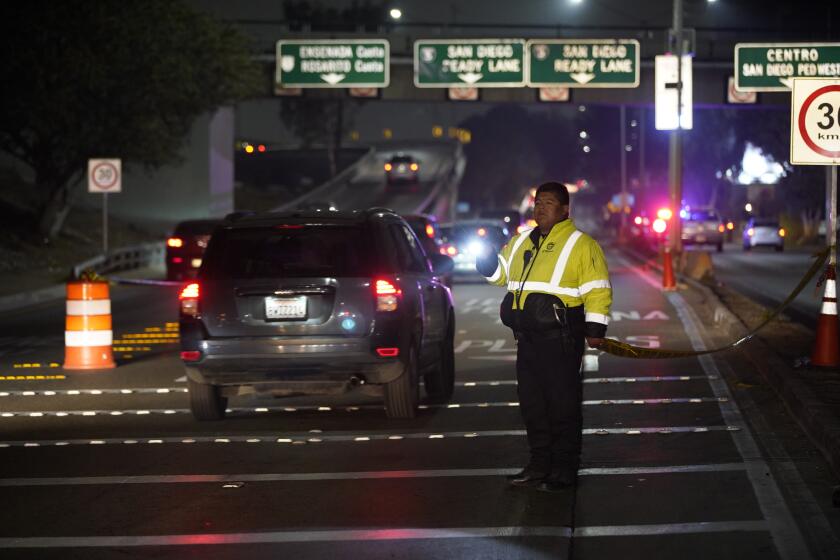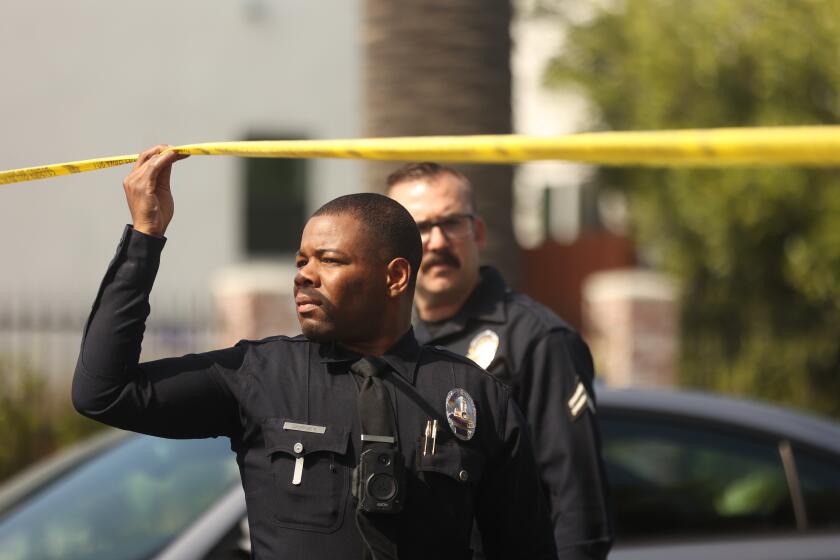Long border waits return after smooth reopening this month

- Share via
BAJA CALIFORNIA, Mexico — Border wait times are back with a vengeance after the U.S.-Mexico border reopened smoothly to nonessential travel this month.
Weekend warriors took to social media to report brutal lines in the days after Black Friday, with several people saying they had to ditch their place to make a run for the bathroom after waiting several hours to cross.
By midday Tuesday, the weekend traffic had dissipated, but daily border crossers expressed their annoyance.
“I think it’s so frustrating because there’s just nothing you can really do about it. If you have to be at work, you just have to get up early and wait, what else can you do?” said Claudia Vallemoreno, a 48-year-old from Baja California.
“La línea es la línea,” she added, laughing. It’s a phrase regular border crossers often use to note the futility of complaining: “The line is the line.”
Lines weren’t as long as expected in Tijuana, and traffic moved steadily through the early morning.
Telemundo 20’s border-wait reporting function on its phone application showed a wait of more than two hours about 6 a.m. Tuesday in the Ready Lane, a dedicated lane for travelers entering the U.S. at land border ports of entry with identification that contains a radio frequency identification chip. It’s typically used by more frequent border crossers such as essential workers.
Tijuana resident Arturo Avilar, 30, said Tuesday that he was relieved to finally get his SENTRI card, a special expedited processing card for travelers who are considered low-risk.
“I really don’t know what I would do without it,” said Avilar, who added that the lines haven’t been as bad as he expected with the border reopening. “I’ve been crossing the border daily for the past three weeks, and I really don’t think I could have done it without the SENTRI. It’s taken my daily wait down from two hours to under 40 minutes.”
The border reopened Nov. 8 with shorter lines and less traffic than anticipated, leaving international land travelers pleased. But traffic began creeping up just days later, prompting questions about the use of resources and staffing shortages at Customs and Border Protection, the agency that staffs the checkpoint booths.
Increases in staffing have not kept pace with upgrades to infrastructure at the San Ysidro and Otay Mesa ports of entry, Rep. Scott Peters (D-San Diego) said.
From 2004 to 2015, the U.S. government spent $741 million to sharply expand and improve the San Ysidro Port of Entry. The 62 northbound inspection booths spread out over 34 lanes were supposed to speed up border crossings, but that has not panned out.
From 2012 to 2019, crossings at San Ysidro rose by 40%, according to the U.S. Department of Transportation. Customs and Border Protection did not respond to questions posed Monday afternoon about the traffic delays.
Gustavo de la Fuente, the executive director of the Smart Border Coalition, said CBP has been focusing its resources on the busy weekday mornings, which can cause delays on weekends.
“Because of CBP’s staffing, they’re making their best efforts to have as many staff members available, but they did communicate to several organizations, including ours, that wait times would be longer based on the increased traffic volume that was expected after the restrictions were lifted to nonessential travelers with vaccination proof,” he said.
More to Read
Sign up for Essential California
The most important California stories and recommendations in your inbox every morning.
You may occasionally receive promotional content from the Los Angeles Times.
















